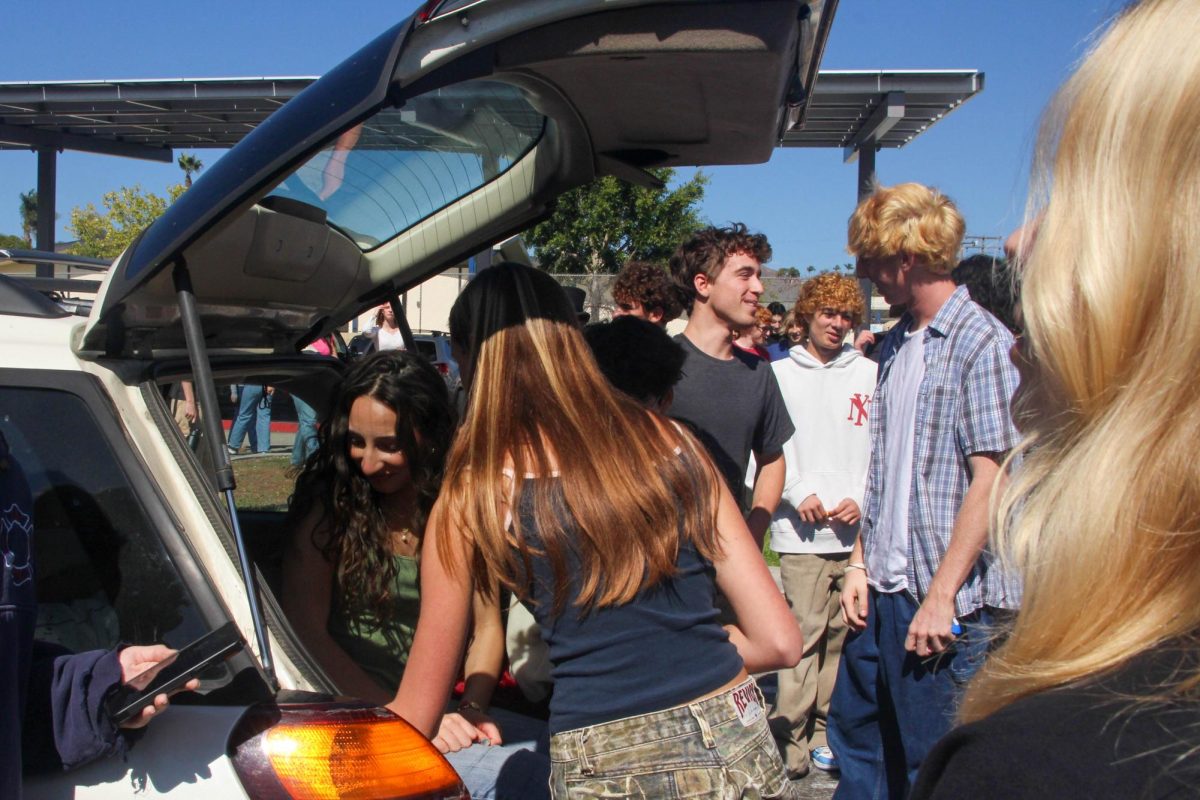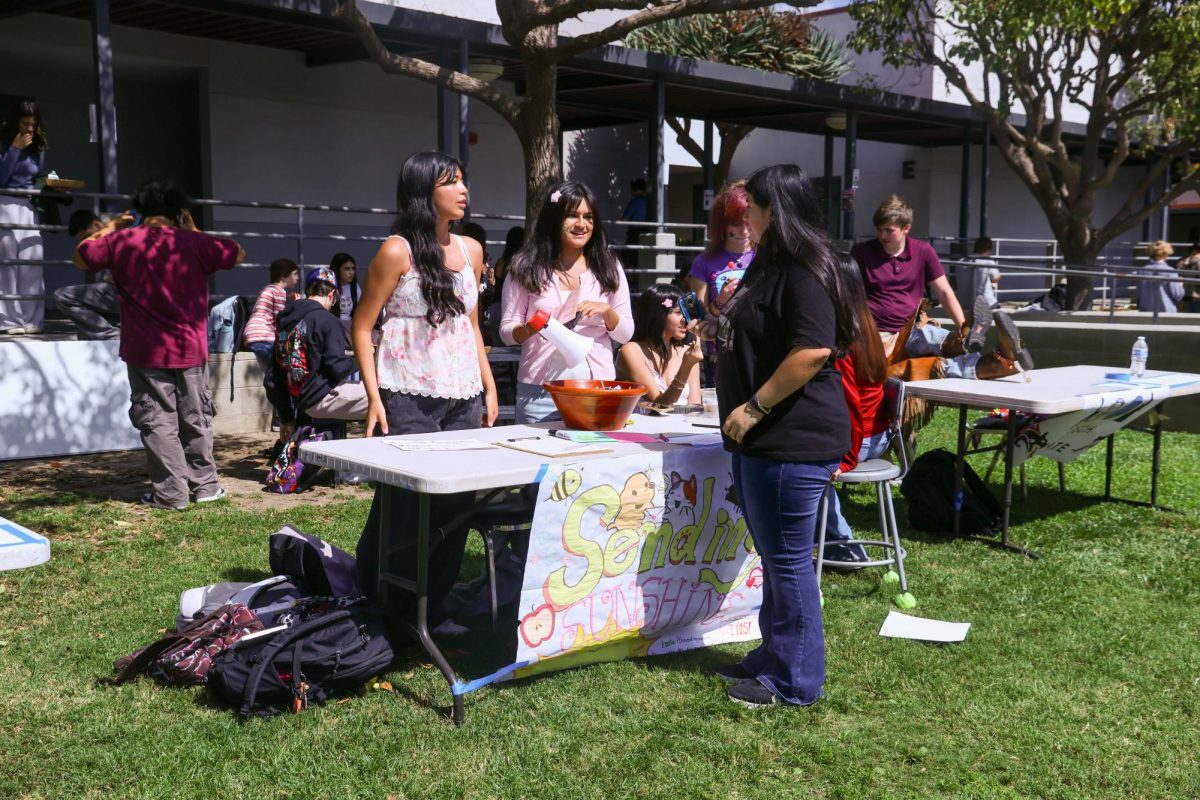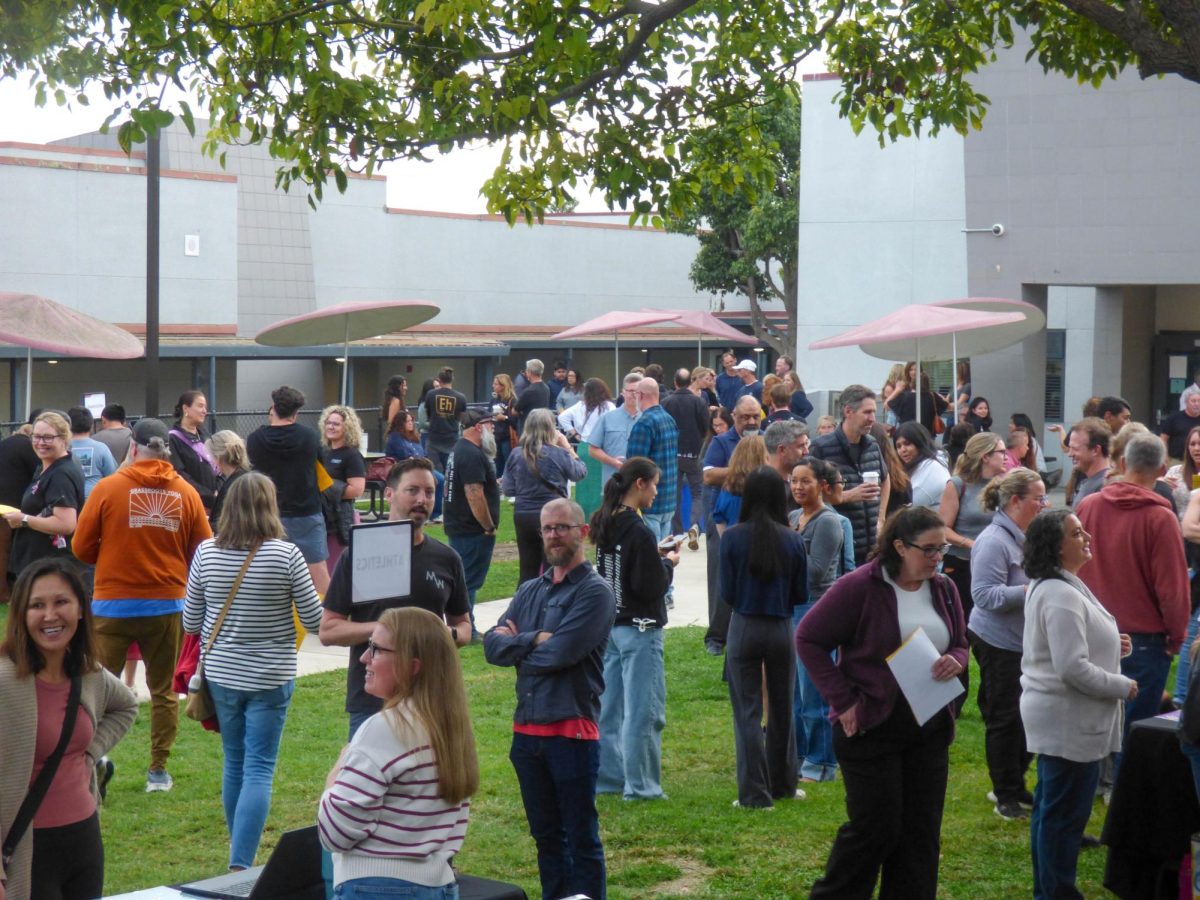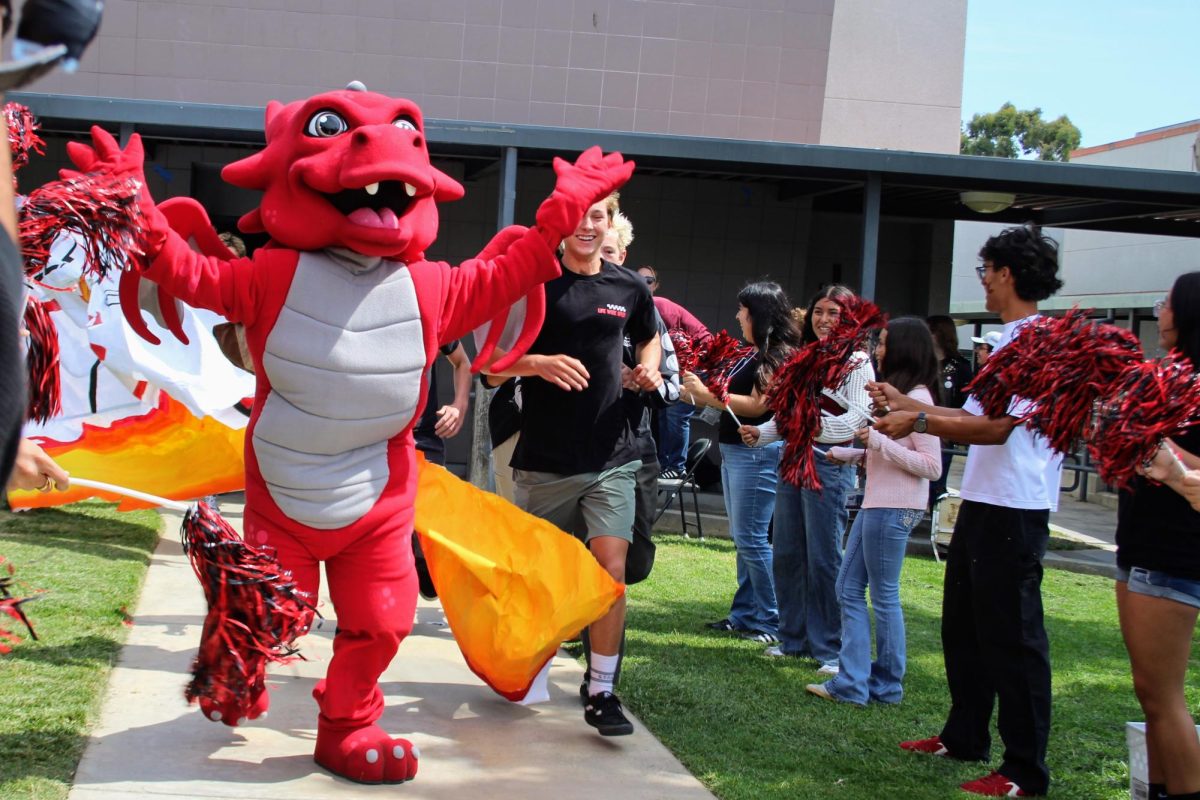“My egg survived!” This may seem like an odd statement at first, but this is exactly what eager physics students were saying when their egg capsules successfully prevented an egg from cracking.
During the annual physics egg drop, conducted by physics teacher John Weldele, students were assigned to create a device of their own design which would effectively preserve an egg as it is randomly thrown into the air.
[soundcloud url=”https://api.soundcloud.com/tracks/309524779″ params=”color=ff0000&auto_play=false&hide_related=false&show_comments=true&show_user=true&show_reposts=false” width=”100%” height=”166″ iframe=”true” /]
Students were required to make the project as light as possible and also have the contraption consume the least amount of volume.
This experiment allows for students to apply properties of physics learned in class to their contraption.
The creations varied from yogurt cups and egg cartons to boxes made of straws and bags of popcorn with a parachute attached.

Evan Somma ‘17 based his creation off of a rocket ship. He believed that his structure would function by the principles of deceleration and the support of the egg.
Sean Ward ‘18 wrapped his egg in a paper towel and put the egg into an egg carton.
“My kind of philosophy on that is that the egg carton is designed to not break the eggs when dropped, so if I perfect that, it may work,” Ward said.
Unfortunately, Ward’s idea was disproven, and his egg was broken.
Brian Sturm ‘19 and his partner Isaac Goldstein ‘17 decided to put their egg into a bag of popcorn and attach a paper towel parachute to the bag containing the egg.
“Isaac suggested that popcorn may be a good means of preventing the eggs from breaking as it hit the ground, […] and in order to increase the distance it can be thrown from, we added a parachute in order to further slow the fall,” Sturm explained.
Another group designed an enclosure out of straws, because it was light and small and took up little volume.
“[The project] mostly deals with what we talked about last semester,” Anika Hsu ‘17 said. “It involved topics of potential and kinetic energy. When the egg’s at the top, it has potential energy, but as it’s falling down, it has kinetic energy.”
Their goal was to minimize the amount of kinetic energy and they were successful in preserving their egg.
[soundcloud url=”https://api.soundcloud.com/tracks/309525111″ params=”color=ff0000&auto_play=false&hide_related=false&show_comments=true&show_user=true&show_reposts=false” width=”100%” height=”166″ iframe=”true” /]
Once the project is completed, students will be required to write a paper tying in the reasons for the egg surviving with the properties of physics that they studied in class.
“Part of [the students’] grade is dependent on who has the smallest device and who has the lightest,” Weldele said. “They are in competition amongst each other, not only in creating a device that works, but that works with as small and light of a design as they can make.”
Editor’s note: Interviews and photos for this article were taken during the AP Physics class’ egg drop, but all other physics classes conducted drops as well.










